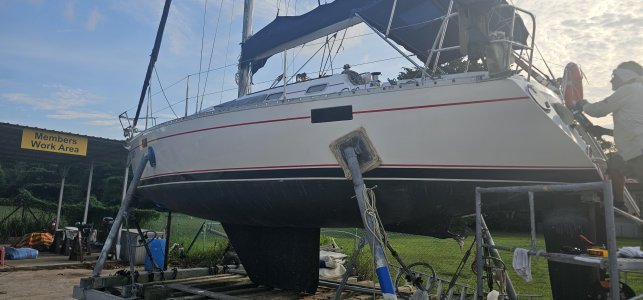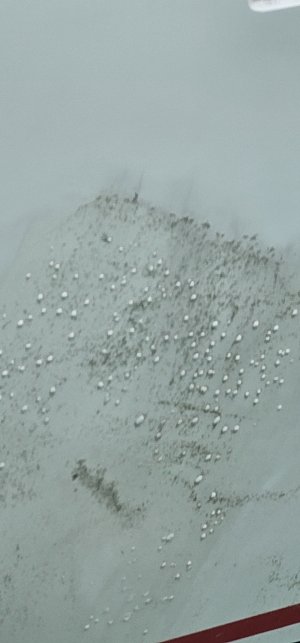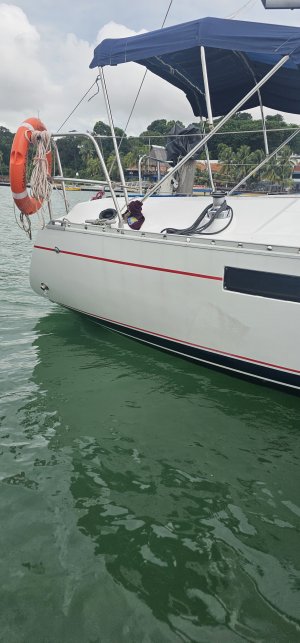ojk1184
New member
I have had my Beneteau Oceanis 320 on the hard for about 4 weeks doing some various works and when we launched today there is blistering where the stand pads were resting against the hull. I am being told by those responsible for hauling out that it's osmosis from moisture within the hull. I don't believe this is the reason and I suspect either trapped moisture / solvent on the pads causing the blistering. When I touched the blisters today they popped with very light touch.
Opinions on the below would be appreciated:
We suspect she may already have moisture in her hull, and the warmer/humid temperatures experienced on the surface in contact with the support pads may have quickened the osmosis process, resulting in the blisters.
The support pads have never been an issue for any of the previous boats we've upslipped, and we have had boats stay much longer than a month on the hard.
The durability and water-resistant properties of the gelcoat/paint may have been diminished since it was last applied, and may be further compromised when subjected to higher humidity.
Opinions on the below would be appreciated:
We suspect she may already have moisture in her hull, and the warmer/humid temperatures experienced on the surface in contact with the support pads may have quickened the osmosis process, resulting in the blisters.
The support pads have never been an issue for any of the previous boats we've upslipped, and we have had boats stay much longer than a month on the hard.
The durability and water-resistant properties of the gelcoat/paint may have been diminished since it was last applied, and may be further compromised when subjected to higher humidity.




